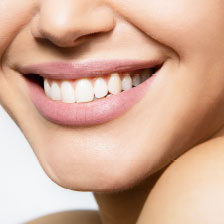
Do you know what color healthy gum tissue is? If you guessed light pink, you’re correct! Healthy tissues are typically pink or coral in color. This color indicates good blood circulation and is a sign of normal oral hygiene. If your gums are consistently pink, it usually suggests that your oral health is in good condition. In this blog, your Sheridan, WY, dentist explains various conditions that could cause irregular gum tissues and what they could mean for your overall health.
Red or Inflamed Gums
Red or inflamed gums can be an indication of gum disease, specifically gingivitis. This condition occurs when bacteria build up around the gum line, leading to inflammation and redness. Other symptoms of gingivitis may include bleeding gums, tenderness, and bad breath. It is crucial to address gingivitis promptly to prevent it from progressing into more severe gum disease, such as periodontitis.
Pale or White
Pale or white gums can be a sign of poor circulation or anemia. When there is a decrease in blood flow to the gums, they may appear paler than usual. Additionally, certain oral conditions, such as leukoplakia or oral lichen planus, can cause white patches to develop on the gums. If your gums appear unusually pale or white, it is advisable to consult with a dentist or other healthcare professional to determine the underlying cause. If you have just whitened your teeth, you may see white spots where the bleach touched the gum tissue. This will eventually slough off and is not a cause for concern.
Darkened or Discolored
Darkened or discolored gums can indicate a variety of issues. One potential cause is smoking, as the chemicals in tobacco products can cause black or brown pigmentation on the gums. Darkened gums can also be a consequence of certain medications or can be a hereditary trait. However, in some cases, darkened gums may be a sign of gum disease or a condition known as melanin hyperpigmentation. It is essential to maintain dental check-ups to identify the cause and ensure appropriate treatment if necessary.
Blue or Purple
Blue or purple gums may indicate a lack of oxygen in the bloodstream, which could be a severe medical emergency. This discoloration is typically associated with a condition called cyanosis and requires immediate medical attention. Cyanosis can be caused by various factors, such as respiratory problems, heart conditions, or circulation issues. Seek prompt medical assistance if you notice a bluish or purplish hue in your gums.
Schedule Your Dental Check-Up Today!
While the color of your gums alone cannot definitively determine your oral health, it can offer valuable clues about underlying health conditions. Monitoring the color of your gum tissues and promptly addressing any changes or abnormal hues is important for maintaining good oral health. Reach out to Grinnell Street Dental in Sheridan, WY at 307-672-7567 to schedule your next dental exam today.







